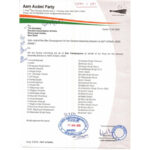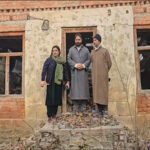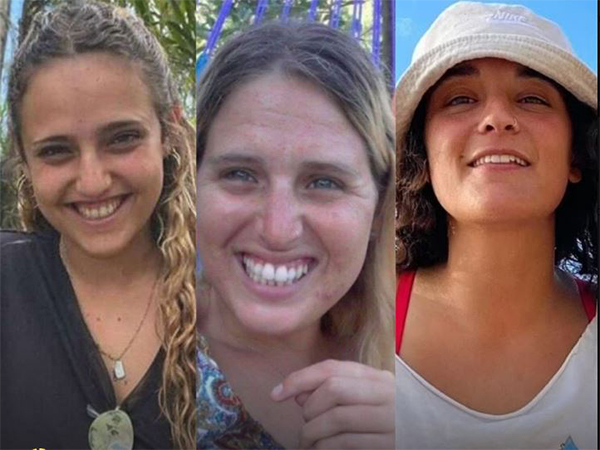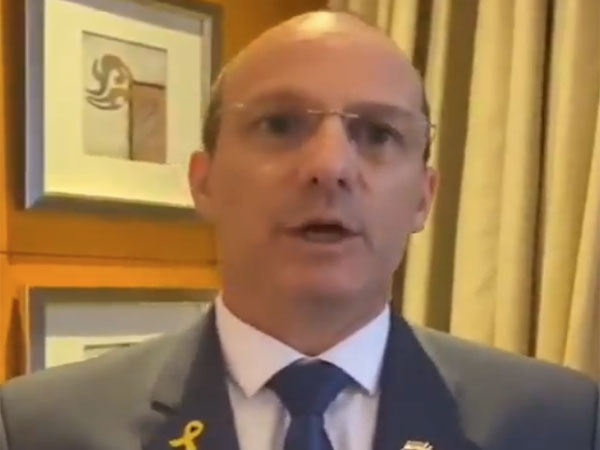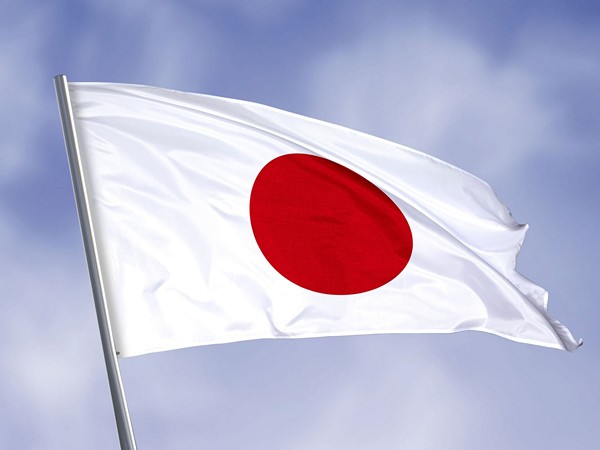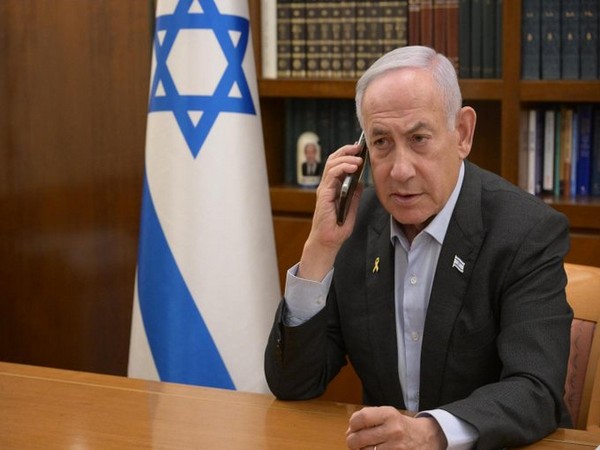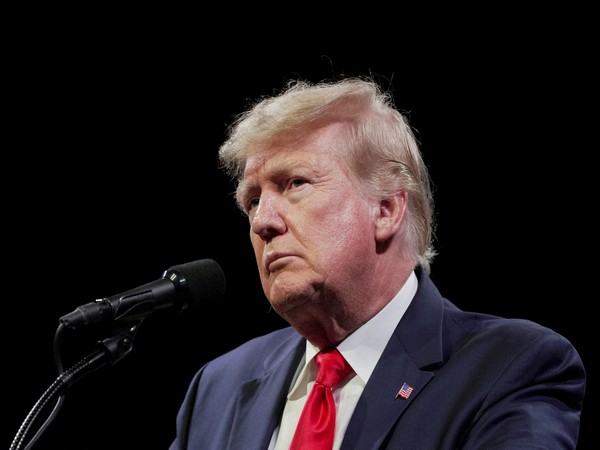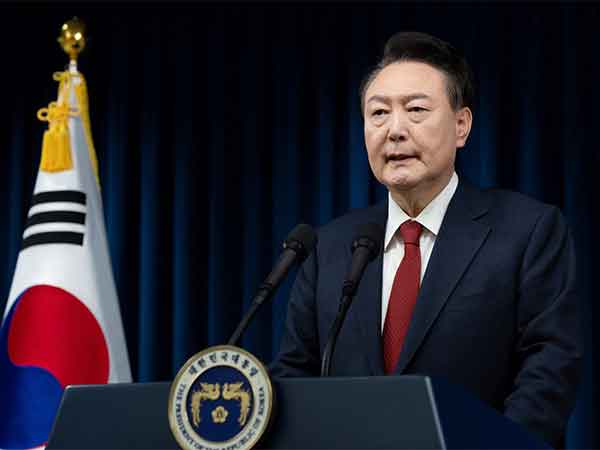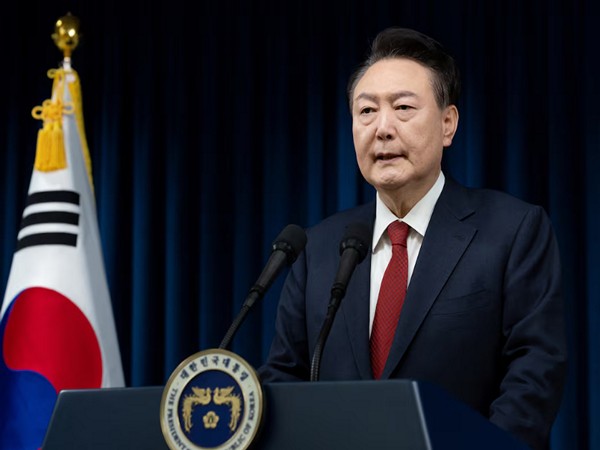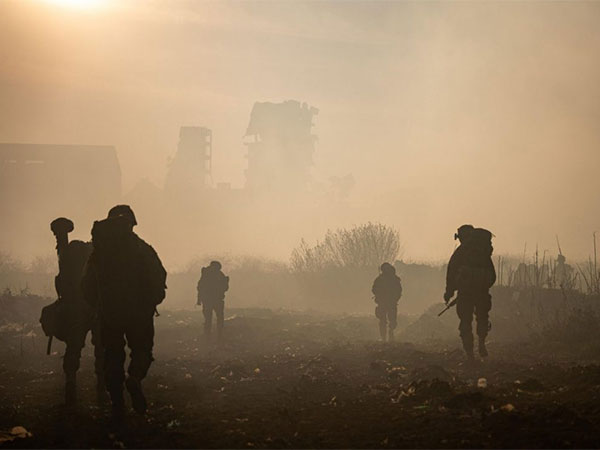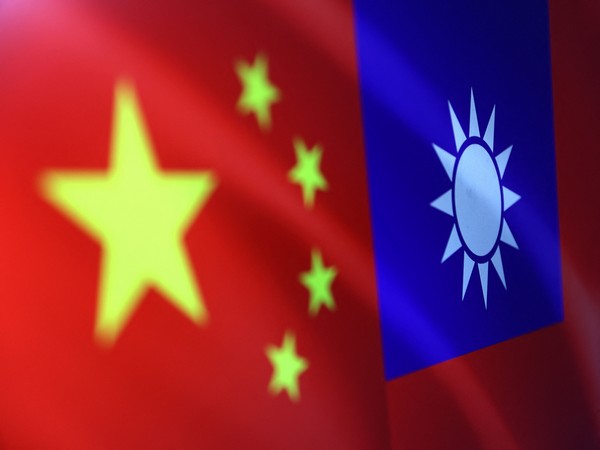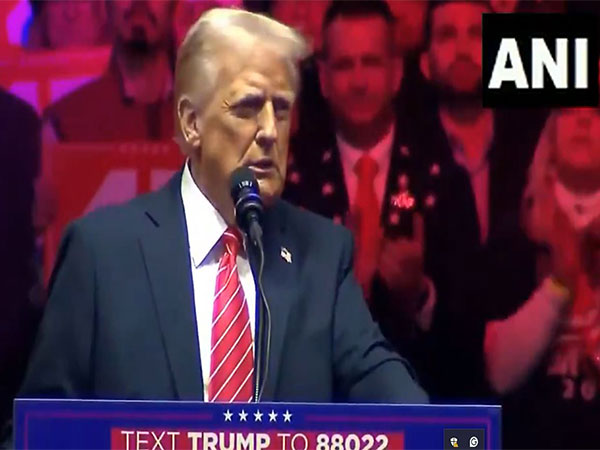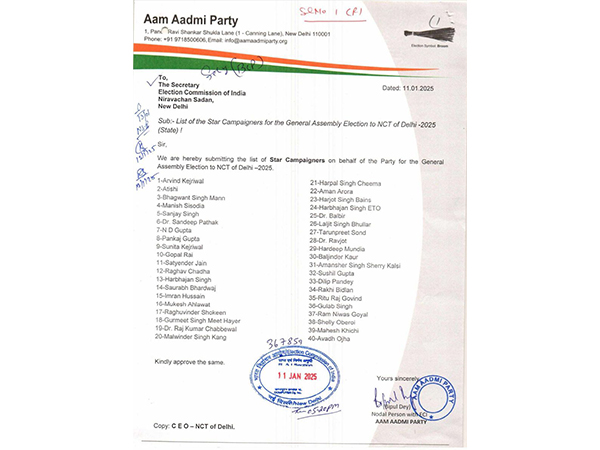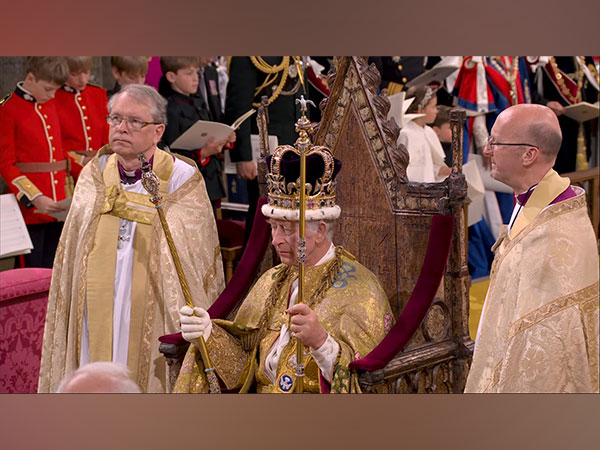
London [United Kingdom], May 6 (ANI): As King Charles III was crowned, gun salutes were fired from 13 locations across the UK including Edinburgh, Cardiff and Belfast, and on deployed Royal Navy ships, CNN reported. The largest, a 62-round salute, happened from the Tower of London. A six-gun salute took place at Horse Guards Parade and 21 rounds were fired at the remaining locations.
The bells of Westminster Abbey rang out to celebrate the historic moment, CNN reported.
After the King was crowned, QueenCamilla received her own coronation, albeit in a slightly different form. Like her husband, she was anointed with holy oil by the Archbishop of Canterbury, but without a screen, which demonstrates the different nature of anointing a consort compared to a reigning sovereign, CNN reported.
The Keeper of the Jewel House then presents the Consort’s Ring, which symbolizes promise and commitment, “marrying” her to the King and both to God and their people. Then, she was crowned with Queen Mary’s Crown, marking the first time in recent history that a new crown wasn’t made specifically for this occasion, and presented with the Sceptre and Rod, CNN reported.
Finally, Camilla was enthroned. This was followed by an original composition by Andrew Lloyd Webber that sets verses from Psalm 98 to music. (ANI)
King Charles III Coronation: Most sacred part of service, Anointing completed behind curtains
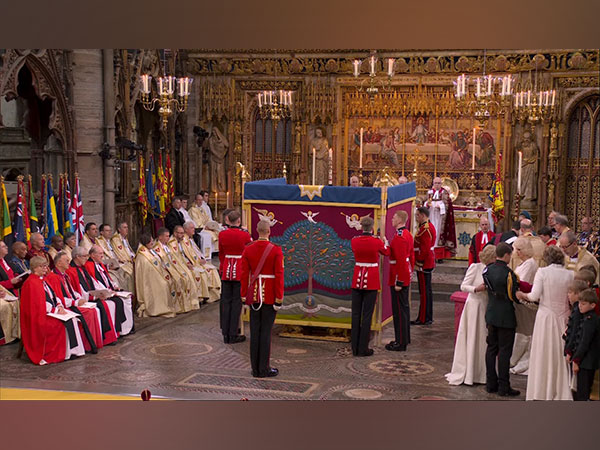
The third and most sacred phase of the service, the anointing of King Charles III was completed behind curtains in the Westminster Abby on Saturday. It began with the King and Queen kneeling at the Chairs of Estate, as the choir sang in English, Welsh, Gaelic, and Irish. The Archbishop of Canterbury led a short prayer, CNN reported.
The most dramatic part of the ceremony was completed. It is the only section that took place away from the crowds, cameras and sharp-eyed photographers.
What happened behind the curtains: the Dean of Westminster poured holy oil from the Ampulla, a gold eagle-shaped flask, onto the Coronation Spoon, and then the Archbishop of Canterbury anoints Charles on his head, breast and hands, according to the Church of England’s liturgy, CNN reported.
The 12th-century, silver-gilt spoon is the oldest object used in coronations, having survived the obliteration of royal regalia during the English Civil War. By contrast, the Ampulla was most likely melted down. A new one was created for King Charles II’s coronation in 1661, following the restoration of the monarchy the year before.
The anointing takes place behind a three-sided screen, hidden from view while Charles is seated on the Coronation Chair. In the background, the Choir of Westminster Abbey sings the anthem “Zadok the Priest” by George Frideric Handel, which was composed for the coronation of King George II in 1727 and performed at every British coronation since. (ANI)
British Sikh Lord Indarjit Singh presents Glove to King Charles III on Coronation
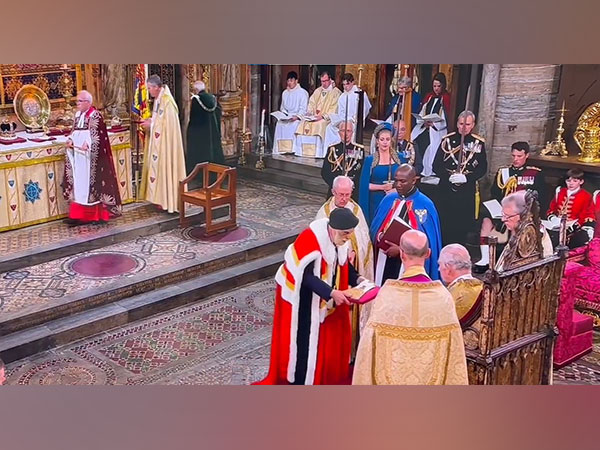
London [United Kingdom], May 6 (ANI): At the Coronation on Saturday, the Glove to hold the Sovereign’s Sceptre during the Crowning, was presented to King Charles III by Lord Indarjit Singh of Wimbledon. The Glove is worn to hold the Sovereign’s Sceptre during the Crowning and then removed before processing to the Throne Chair, the Royal.UK wrote.
The Coronation Glove or gauntlet is made for the Sovereign’s right hand. The King reused the Coronation Glove made for the Coronation of his grandfather, King George VI, in the interests of sustainability and efficiency. It was presented by the Worshipful Company of Glovers, made by Dents the glovemakers, and embroidered by Edward Stillwell and Company in 1937.
This Glove has been conserved by Dents with support from the Worshipful Company of Glovers and was re-presented by the Company ahead of the Coronation on 6th May, the Royal.UK wrote.
The Glove is made of white leather and the wrist is embroidered with gilt metal thread, wire and spangles in the form of national emblems including the Tudor Rose, thistle, shamrock, oak leaves and acorns. The back of the hand with an embroidered ducal coronet in red velvet above the coat of arms of the family of the Dukes of Newcastle. The wrist is lined with red satin.
The King reused historic items of clothing from the Royal Collection, worn by previous monarchs at past Coronations, during the Coronation Service at Westminster Abbey. The ‘vestments’ were worn as the King was crowned by the Archbishop of Canterbury in the Coronation Chair.
His Majesty reused vestments which featured in the Coronation Services of King George IV in 1821, King George V in 1911, King George VI in 1937 and Queen Elizabeth II in 1953, including the Colobium Sindonis, the Supertunica, the Imperial Mantle, the Coronation Sword Belt and the Coronation Glove, the Royal.UK wrote.
Although it is customary for the Supertunica and the Imperial Mantle to be reused, King Charles III also reused the Colobium Sindonis, Coronation Sword Belt and Coronation Glove worn by his grandfather King George VI, in the interests of sustainability and efficiency, the Royal.UK wrote. Lord Indarjit Singh is a British Sikh peer. The House of Lords, also known as the House of Peers, is the upper house of the Parliament of the United Kingdom.
Lord Indarjit Singh represented the Sikh community at Queen Elizabeth II’s funeral, former Member of Parliament Tarlochan Singh said in the statement. He had also attended the wedding of the son of the then-Prince of Wales Charles.
King Charles III is also serving as the Head of the Church of England and all the ceremonies are conducted by the Archbishop. However, it is reported that King Charles expressed his desire to be a defender of all faiths while serving as head of the Christian faith in the UK.
It is for the first time that peers from different faiths – Muslim, Hindu, Sikh and Jewish were part of the procession during the coronation ceremony. The Sikh community had hailed the decision of King Charles to give equal status to all religions, Tarlochan Singh said in the statement. The UK Government named 90-year-old Lord Indarjit Singh to represent the Sikh community.
Earlier this month, the UK’s royal family revealed new details, including a new Twitter emoji ahead of the coronation of King Charles III, which is scheduled to take place next month. Taking to the official Twitter handle, the Royal Family said, “A special emoji for the Coronation has gone live today! The emoji, based on St Edward’s Crown, will appear when any of the following hashtags are used: #Coronation #CoronationConcert #TheBigHelpout #CoronationWeekend #CoronationBigLunch”.
On the morning of the Coronation, the Royals travelled from Buckingham Palace in The King’s Procession to Westminster Abbey in the Diamond Jubilee State Coach – which was created in 2012 for Queen Elizabeth II’s Diamond Jubilee.
The King’s Procession, accompanied by The Sovereign’s Escort of the Household Cavalry departed Buckingham Palace and proceeded down The Mall, passing through Admiralty Arch and Trafalgar Square, down Whitehall and along Parliament Street to Westminster Abbey. The procession from Westminster Abbey to Buckingham Palace took the same route in reverse.
The procession included Armed Forces from across the Commonwealth and the British Overseas Territories, and all Services of the UK’s Armed Forces. The members of the Royal family travelled in the Gold State Coach, which was commissioned in 1760 and was first used by King George III to travel to the State Opening of Parliament in 1762, and has been used at every Coronation since that of William IV in 1831. (ANI)
Royals parade back to Buckingham Palace after King Charles III Coronation concludes

London [United Kingdom], May 6 (ANI): Newly-crowned King Charles III left Westminster Abbey after the coronation and entered the Gold State Coach, which took take him back to Buckingham Palace, CNN reported on Saturday.
The coach has been used in every coronation since that of William IV in 1831, providing a powerful connection to previous elaborate ceremonies. It is drawn by eight Windsor Grey horses.
This coronation procession followed the same route but was much larger in scale than the one preceding the coronation service. It featured “Armed Forces from across the Commonwealth and the British Overseas Territories, and all Services of the Armed Forces of the United Kingdom, alongside The Sovereign’s Bodyguard and Royal Watermen,” according to the royal household, CNN reported.
“God Save the King” was sung for Charles III for the first time since his crowning, as Britain’s first coronation service in seven decades moved towards its conclusion.
It was the same arrangement of the anthem that was sung for Charles’ mother, Queen Elizabeth II, at her coronation in 1953. Soon, the procession of the King and Queen began, CNN reported.
Holy Communion, or the taking of consecrated bread and wine, is an act of worship integral to Christianity — the “ultimate act of remembering Jesus,” as the Church of England says in its official liturgy.
The King acknowledged the gifts of bread and wine as they were taken to the High Altar before the Archbishop of Canterbury said two prayers – the Prayer Over the Gifts and the Eucharistic Prayer. The first of these was used at Queen Elizabeth II’s coronation and found in the Liber Regalis (The King‘s Book), one of the oldest and most important sources for the coronation service. The second draws from many different sources.
The beginning of the Eucharistic Prayer echoed words used at the Queen’s 1953 coronation and adds words from the Bible. The prayer’s central section draws from Jesus’ words when he served bread and wine to his disciples at the Last Supper before he died, according to the liturgy, CNN reported.
Then, Sanctus was sung. The text dates from the fifth century and possibly earlier. It’s set to music is a new commission for this service by the British composer Roxanna Panufnik.
The Eucharistic Prayer continued, followed by the Lord’s Prayer. The King and Queen received Holy Communion as the choir sang the Agnus Dei, another traditional text for the mass, set to new music by Tarik O’Regan. (ANI)


